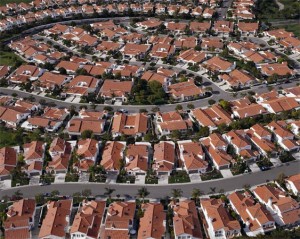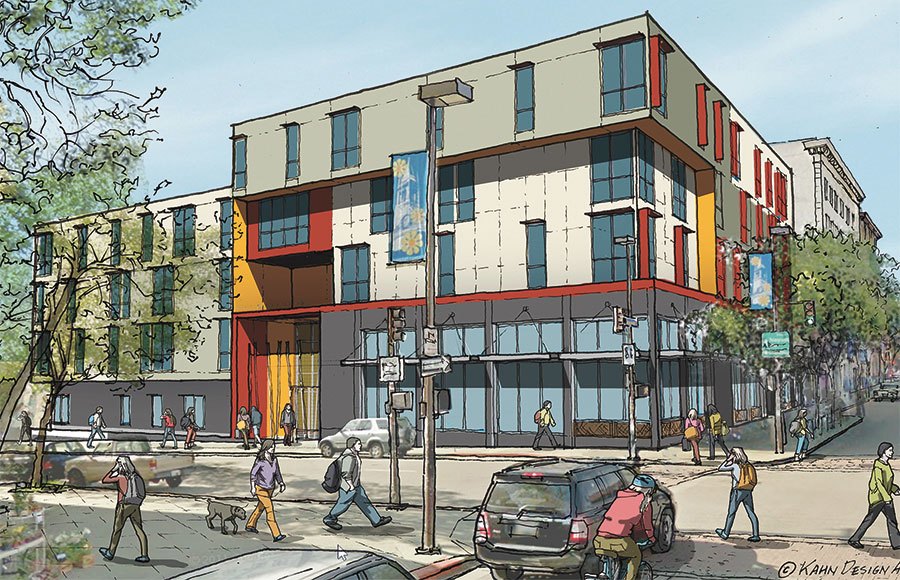Bill Witte is the CEO and Chairman of Related California, one of the largest developers of urban and multifamily housing in the state. So if anyone should know about the challenges facing infill development in California, it should be him. The Planning Report summarizes one of his recent keynotes and a subsequent interview, which should be required reading for anyone trying to address the challenges of building more infill.
His big point? We need better local planning in this state, or else we’ll face continued backlash against infill and a resulting continued shortage of housing. Key passage here:
But every 10 years, in the middle of a boom, there is a call to pass a housing impact fee, and stop or slow development. The City of San Jose recently passed one, and there’s discussion throughout the Bay Area of bringing it to other communities. Taken collectively, we’ve got a serious problem.
Why does this happen? Is this just a point in the cycle?
No. It’s because there’s perceived inaction at every level of government. As a result, people throw up their hands.
In LA, other than an unfortunately failed attempt in the Hollywood area, there has been no updating of Community Plans. Developers are accused of negotiating to make a deal, but it’s more like stumbling our way through the process and getting to the point of working with our Council office, making a deal, and hopefully getting it through.
Witte urges small and medium-sized development companies to get involved at the local level to draft more comprehensive, functional plans for growth.
Meanwhile, for a slightly different take, Carol Galante and Caroline Reid at UC Berkeley argue [PDF] that the state should get more directly involved in regulating local land use, in order to overcome local resistance to new housing.
It may ultimately take a combination of the two approaches to improve development and affordability in the state. But given the political resistance to more state-centered planning, Witte’s approach seems like the more urgent path to take at this point.
 There’s been a lot of industry noise around the California Environmental Quality Act (CEQA), which requires environmental review for new projects and mitigation of impacts where feasible. Industry of course doesn’t like the expense, delay, and uncertainty that can be associated with this review, while environmentalists and other interests (particularly labor, homeowners groups, and rival businesses) like to have leverage over proposed projects to shape or sometimes kill them through delay.
There’s been a lot of industry noise around the California Environmental Quality Act (CEQA), which requires environmental review for new projects and mitigation of impacts where feasible. Industry of course doesn’t like the expense, delay, and uncertainty that can be associated with this review, while environmentalists and other interests (particularly labor, homeowners groups, and rival businesses) like to have leverage over proposed projects to shape or sometimes kill them through delay.
I’ve been critical of recent studies from the law firm Holland & Knight, purporting to show how CEQA litigation overwhelmingly targets environmentally “good” projects, such as infill, transit and renewable energy. These studies, in my view, were slanted and flawed.
But the sad fact is that we have little empirical study of this important law, which could help us evaluate claims from both sides in a fair manner.
Today, however, the Rose Foundation is releasing a new study, authored by the research firm BAE Urban Economics [PDF], that at least sheds light on the rate of litigation and costs of general CEQA compliance. The study found the following key points:
The number of lawsuits filed under CEQA has been surprisingly low, averaging 195 per year throughout California since 2002. Annual filings since 2002 indicate that while the number of petitions has slightly fluctuated from year to year, from 183 in 2002, to 206 in 2015, there is no pattern of overall increased litigation. In fact, litigation year to year does not trend with California’s population growth, at 12.5 percent overall during the same period.
The rate of litigation compared to all projects receiving environmental review under CEQA is also very low, with lawsuits filed for fewer than 1 out of every 100 projects reviewed under CEQA that were not considered exempt. The estimated rate of litigation for all CEQA projects undergoing environmental review (excluding exemptions) was 0.7 percent for the past three years. This is consistent with earlier studies, and far lower than some press reports about individual projects may imply.
Furthermore, looking at select case studies of four projects, the study authors found that direct environmental review costs for these four projects ranged from 0.025 to 0.5 percent of total project costs. Hardly a money drain for the chance to ensure advance environmental mitigation.
This study is helpful in putting the litigation in context, and I think it convincingly indicates that CEQA litigation is not a major problem when viewed from a statewide perspective.
Now to be sure, there are other costs associated with CEQA, such as delay, uncertainty, and defensive siting and project design. But just focusing on litigation, and telling the misleading story that it overwhelmingly affects environmentally beneficial projects, is not helpful for the broader debate.
Meanwhile, the state has made significant efforts over the past decade or so to relieve the CEQA burden on qualifying infill projects, such as SB 375, SB 226, and SB 743. We are still implementing those laws, through the development of regional transportation plans, local plans for infill, and new state guidelines. We would be better served to let those processes play out, and undertake further study, before making major changes to the law that could unintentionally benefit projects with negative environmental impacts.
This study underscores the need for that measured approach and hopefully portends more solid analysis of CEQA and its impacts in the near future.
I’m a big fan of urban spaces and buildings, but if not done well, these high-rises can be all the emotional bummer that NIMBYs claim. New York Magazine describes the recent research documenting this effect:
A growing body of research in cognitive science illuminates the physical and mental toll bland cityscapes exact on residents. Generally, these researchers argue that humans are healthier when they live among variety — a cacophony of bars, bodegas, and independent shops — or work in well-designed, unique spaces, rather than unattractive, generic ones. In their book, Cognitive Architecture: Designing for How We Respond to the Built Environment, Tufts urban policy professor Justin Hollander and architect Ann Sussman review scientific data to help architects and urban planners understand how, exactly, we respond to our built surroundings. People, they argue, function best in intricate settings and crave variety, not “big, blank, boxybuildings.”
The bottom line is that design is critical when it comes to infill and urban spaces. So basically the 1970s were a waste, given how ugly and boxy so many of the buildings from that era are. I think this research also argues against mega-developments on super blocks. Smaller, broken up styles and innovation are more likely to produce interesting and pleasing neighborhoods.
But while it’s easy to bash the 1970s, I see a lot of the same mistakes being made nowadays with infill. Superblock development seems to be more and more common in urban areas, while the latest design fads indicate a return to boxy. Fortunately, places like San Francisco and downtown Los Angeles are building a lot of what I consider to be elegant and sleek glass-windowed skyscrapers. But mid-sized cities like Santa Monica and Berkeley are relying more on the wood frame boxy look.
Case in point, on Telegraph Avenue near where I work, a new mixed-use development is popping up on the site of the old Raleigh’s bar that burned down a few years ago. But the look is boxaholic, creating a stark contrast with some of the more interesting and pretty brick buildings nearby that were built early last century, with all their detail and interesting features. Here’s an artist rendering of the Telegraph building (which is almost complete now):
Aside from the use of colors and indented floors, this looks like a larger version of what UPS might deliver to your doorstep.
I’m not an architectural expert, but most of us know good design when we see it. And for those like me who want to see more urban spaces in California, it’s critical that we design them well.
Otherwise, the result may actually be depressing.



